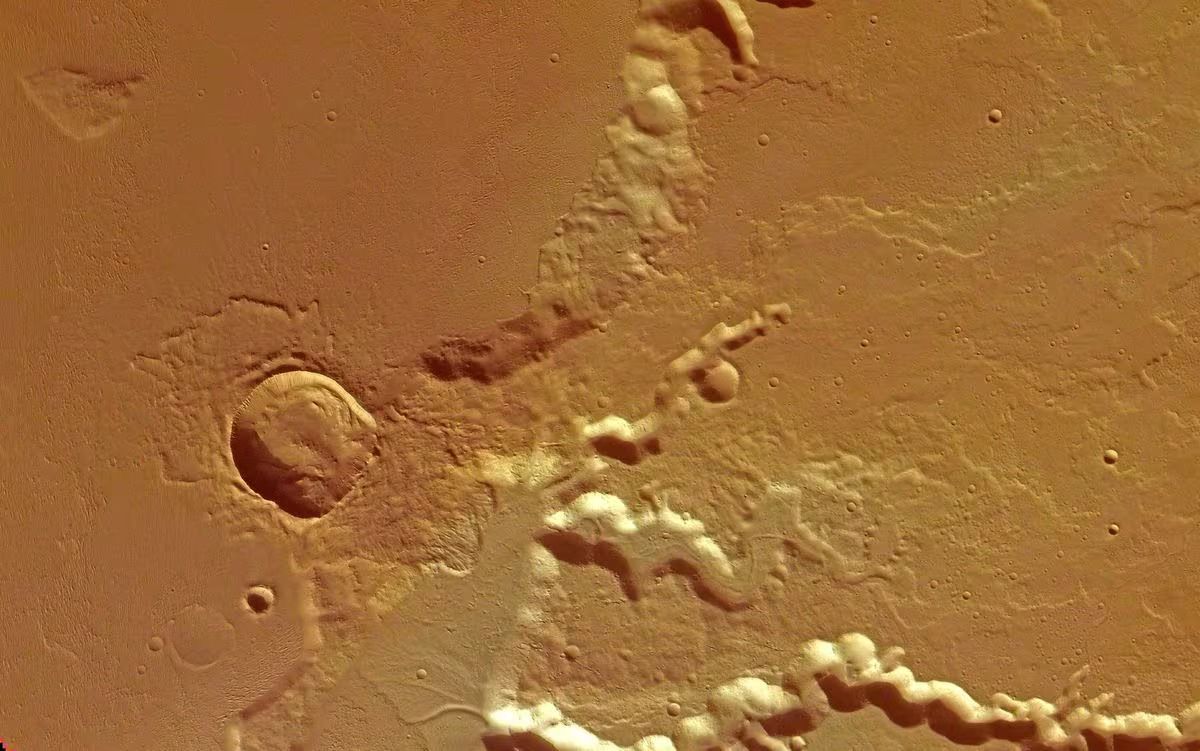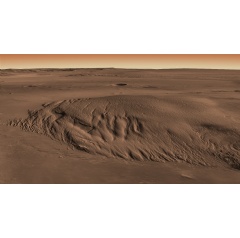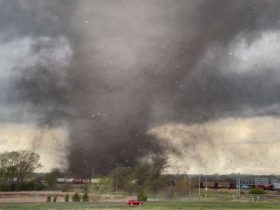A recently released paper, led by Smithsonian senior scientist emeritus Thomas R. Watters, unveils compelling evidence indicating a substantial presence of water ice within the extensive Medusae Fossae Formation (MFF) on Mars.
Published in Geophysical Research Letters on January 18, the paper, titled “Evidence of Ice-Rich Layered Deposits in the Medusae Fossae Formation of Mars,” showcases new radar sounder data revealing striking parallels between the MFF deposits and the ice-enriched polar layered deposits found at Mars’ north and south poles.
The research suggests that the MFF deposits contain pore-filling ice, as none of the modeled ice-free geologic materials exhibit inferred electrical properties.
The identification of layering across major units of the MFF substantiates the claim that these deposits closely resemble the ice-rich polar layered deposits, according to Watters.

The potential existence of ice-rich MFF deposits carries significant implications for Mars’ paleoclimate and could be of considerable value for future human exploration missions.
Situated at the Martian equator, along the boundary between the northern lowlands and heavily cratered highlands, the MFF deposits offer an ideal landing location due to the lower elevation, providing more atmosphere to decelerate spacecraft during descent.
Despite being among the most enigmatic and poorly understood geological units on Mars, the MFF deposits are gaining clarity through data from the Mars Advanced Radar for Subsurface and Ionospheric Sounding (MARSIS) instrument aboard the European Space Agency’s Mars Express spacecraft.
Initially revealing electrical property similarities, recent MARSIS data goes further by detecting interior subsurface reflectors, indicating pervasive layering akin to the North and South Polar Layered Deposits (NPLD and SPLD), known for their ice-rich composition.
The updated MARSIS data discloses that the MFF deposits attain a maximum thickness of 3.7 kilometers (approximately 2 miles), equivalent to the SPLD’s maximum thickness.
Compaction modeling of proposed geologic materials, such as volcanic ash, windblown sediments, and rock dust, fails to explain the inferred density and electrical properties of such a substantial deposit.
These ice-rich MFF deposits, potentially covered by a dry, insulating material like volcanic ash, represent a substantial reservoir of water in Mars’ equatorial zone.
The estimated water volume is up to 50% of that in the NPLD, surpassing the total water volume in North America’s Great Lakes. This water volume could cover Mars’ surface to a depth of 1.5 to 3 meters (5 to 10 feet).
It is speculated that these ice-rich deposits were left at the Martian equator during periods of high obliquity when the present-day equator was colder and the polar regions were warmer.
Thomas R. Watters, a senior scientist emeritus in the Center for Earth and Planetary Studies at the Smithsonian’s National Air and Space Museum and a member of the MARSIS science team, led this groundbreaking research. The findings contribute to our evolving understanding of Mars’ geological features and potential resources.
For those interested in exploring further, the National Air and Space Museum’s Steven F. Udvar-Hazy Center, situated in Chantilly, Virginia, near Washington Dulles International Airport, offers insight into these discoveries.
Open daily from 10 a.m. to 5:30 p.m., the center provides free admission, with a $15 parking fee for vehicles entering before 4 p.m. Visitors can also explore the museum building on the National Mall in Washington, D.C., open Thursday through Monday from 10 a.m. to 5:30 p.m. (closed Dec. 25), with free admission requiring timed-entry passes for the Washington location.














Leave a Reply